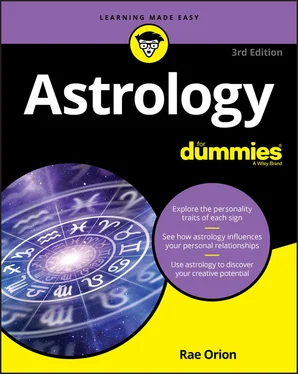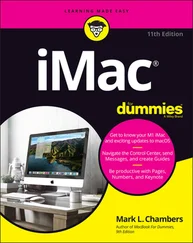One of these days, the equinox will slip back even further, to the constellation of the Water Bearer, and the Age of Aquarius will officially begin. Astrologers differ as to when that will happen because it depends on how you measure the constellations. If only they were neater! If only they were the same size! Instead, they bump into each other and overlap, and their boundaries are a matter of opinion. Do you use the artificial, right-angled, patchwork-like borders assigned to each constellation by the International Astronomical Union in 1930? Or do you look to the ecliptic, which has been artificially divided into 12 equal sections, one per sign? A Belgian astronomer, using the IAU measurements, suggests that the Age of Aquarius will begin in 2597. Another Belgian, writing in February 1890, announced that the Age of Aquarius would begin the very next month. 1844 has been nominated, along with 1962, 2012, and 3573. I cast with my vote with the English astronomer Nicholas Campion, who believes that the Age of Aquarius will begin — or has begun — between 1447 and 3596. Sounds right to me.
In short, there is no agreement except on this one point: Eventually, the equinox point will cycle backwards through the zodiac, all the way to Aries. That process takes about 25,800 years and is known as the Great Year. Our current Great Year began around 2000 BCE. Around the year 23800, the next one will begin. The vernal equinox will return to Aries. The constellations and the divisions of the ecliptic will align, and astrologers will be able to skip this entire explanation. Meanwhile, the constellations and the signs of the zodiac are not the same.
Skeptics who attack astrology — and for some reason, these wary souls can be amazingly hostile — often point to the changing position of the constellations and the precession of the equinoxes as proof that astrology is bogus. The truth is that astrologers are well aware of this phenomenon. In western astrology, the constellations are signposts or symbols. What matters is the division of the ecliptic. The stars, glorious though they are, have nothing to do with your sign.
For that reason, I avoid the term “star sign.” It’s an enchanting phrase, and I wish I could use it in good conscience. I don’t because it misrepresents astrology as it is usually practiced. I prefer the accuracy and simplicity of “Sun sign,” and that is the phrase I use in this book.
Identifying the Signs of the Zodiac
There are twelve signs in the wheel of the zodiac, each one named after a constellation, each with its own style and substance. Together they weave a narrative of human life, a progression that goes something like this:
Aries initiates the cycle with a rush of activity. Like the Big Bang, it kicks everything into motion. It is the sign of action.
Taurus calms and consolidates that ferocious energy, bringing it down to earth in a tangible form and into the body. Taurus is the sign of the senses.
Gemini activates the mind, stimulates curiosity, and forges connections through communication. It is the sign of language.
Cancer turns inward, bringing feelings into consciousness, cultivating the idea of home and family, and seeking security. It is the sign of emotion.
Leo celebrates, dramatizes, and creates. It is the sign of self-expression.
Virgo organizes, evaluates, develops techniques, and attends to details. It is the sign of analysis.
Libra reaches beyond itself, striving for balance through interaction with others and through the power of ideas. It is the sign of relationship.
Scorpio investigates the mysteries of human nature, diving deep into the inner world and the hidden self. It is the sign of transformation.
Sagittarius pursues independence, adventure, education, and the wisdom of philosophy or religion. It is the sign of the seeker.
Capricorn elevates purpose, shoulders responsibility, and creates civilization. It is the sign of structure.
Aquarius seeks liberation, focuses on society, and simultaneously supports individuality. It is the sign of community.
Pisces embodies compassion and the spiritual side of life. It is the sign of dreams and the imagination. It also oversees chaos, out of which will arise the creative fire of Aries. And so the cycle will begin anew.
OPHIUCHUS AND THE 13TH SIGN
It happens every few years, as reliable as the force of gravity: Someone announces that there are 13 constellations in the zodiac, not 12. Uproar ensues.
This folly became a story in 1970, when a book called Astrology 14 by Steven Schmidt argued that two large constellations — Cetus the Whale, and Ophiuchus the Serpent Bearer — lie along the band of the ecliptic and therefore the zodiac should be expanded to include them. The book received enormous publicity, including a write-up in Time magazine, and the idea caught on, although not entirely. Cetus, which barely grazes the ecliptic, never inspired much of a following. But Ophiuchus, a large constellation squeezed in between Scorpius and Sagittarius, did.
Since then, books advocating for the addition of Ophiuchus as the13th sign have appeared with thudding regularity. In 1995, British astrologer Walter Berg published The 13 Signs of the Zodiac , which sold respectably in the United Kingdom but became a giant bestseller when it was translated into Japanese and published there. In 2011, the story flared up again when the Minnesota Planetarium Society announced that the constellations had moved. Ophiuchus was now part of zodiac, they said, and astrologers ought to sit up and pay attention. The BBC reported the findings. Fox news reported the findings. Even Time , which first publicized the story in 1970, weighed in. Their article began, “The cosmic news broke without warning.”
For the zillionth time, astrologers responded. They acknowledged that due to the precession of the equinoxes, the constellations have shifted (a fact I discuss on a previous page). It’s not news to astrologers.
Nor does it matter, because in western astrology, the signs are determined by the Sun’s position on the ecliptic, not by the stars. On the vernal equinox, when day and night are roughly equal, the Sun enters the portion of the ecliptic known as Aries and the astrological year begins. The other signs follow, 30 degrees at a time. The stars and constellations do not determine sign.
So might you be an Ophiuchan? In a word, no. Not in this world.
 The sign that the Sun occupied at the instant of your birth is the most basic astrological fact about you. It defines your ego, motivations, and approach to life. But the Sun isn’t the only planet, and your Sun sign isn’t your only sign. (For astrological purposes, both luminaries — the Sun and the Moon — are called planets. Do yourself a favor and don’t use this terminology when talking to astronomers.) Mercury, Venus, the Moon, Mars, Jupiter, Saturn, Uranus, Neptune, and Pluto represent distinct types of energy, each of which expresses itself in the style of the sign it happens to occupy. When you look at your chart, you will see that not every sign has a planet within its borders. Nonetheless, every sign is in your chart somewhere. The entire zodiac resides within each of us.
The sign that the Sun occupied at the instant of your birth is the most basic astrological fact about you. It defines your ego, motivations, and approach to life. But the Sun isn’t the only planet, and your Sun sign isn’t your only sign. (For astrological purposes, both luminaries — the Sun and the Moon — are called planets. Do yourself a favor and don’t use this terminology when talking to astronomers.) Mercury, Venus, the Moon, Mars, Jupiter, Saturn, Uranus, Neptune, and Pluto represent distinct types of energy, each of which expresses itself in the style of the sign it happens to occupy. When you look at your chart, you will see that not every sign has a planet within its borders. Nonetheless, every sign is in your chart somewhere. The entire zodiac resides within each of us.
 Astrologically speaking, your Sun sign is the most essential fact about you. To determine your sign, use Table 1-1. But remember that the dates vary slightly from year to year. That’s because a circle has 360 degrees, with each sign allotted precisely 30 degrees. But a year has 365 days, not counting leap years. Thanks to that inconvenient difference, the signs don’t divide into days as neatly as one might wish, and minor variations pop up regularly. Take the first day of Cancer the Crab. Usually it’s June 21. But in 2012, 2016, and occasional other years, it was June 20. The bottom line? If you were born on the first or final day of any sign — that is, if you were born “on the cusp” — I advise caution. Before you don that Sagittarian sweatshirt or invest in that Scorpio tattoo, get an accurate copy of your natal chart and check your Sun sign.
Astrologically speaking, your Sun sign is the most essential fact about you. To determine your sign, use Table 1-1. But remember that the dates vary slightly from year to year. That’s because a circle has 360 degrees, with each sign allotted precisely 30 degrees. But a year has 365 days, not counting leap years. Thanks to that inconvenient difference, the signs don’t divide into days as neatly as one might wish, and minor variations pop up regularly. Take the first day of Cancer the Crab. Usually it’s June 21. But in 2012, 2016, and occasional other years, it was June 20. The bottom line? If you were born on the first or final day of any sign — that is, if you were born “on the cusp” — I advise caution. Before you don that Sagittarian sweatshirt or invest in that Scorpio tattoo, get an accurate copy of your natal chart and check your Sun sign.
Читать дальше

 The sign that the Sun occupied at the instant of your birth is the most basic astrological fact about you. It defines your ego, motivations, and approach to life. But the Sun isn’t the only planet, and your Sun sign isn’t your only sign. (For astrological purposes, both luminaries — the Sun and the Moon — are called planets. Do yourself a favor and don’t use this terminology when talking to astronomers.) Mercury, Venus, the Moon, Mars, Jupiter, Saturn, Uranus, Neptune, and Pluto represent distinct types of energy, each of which expresses itself in the style of the sign it happens to occupy. When you look at your chart, you will see that not every sign has a planet within its borders. Nonetheless, every sign is in your chart somewhere. The entire zodiac resides within each of us.
The sign that the Sun occupied at the instant of your birth is the most basic astrological fact about you. It defines your ego, motivations, and approach to life. But the Sun isn’t the only planet, and your Sun sign isn’t your only sign. (For astrological purposes, both luminaries — the Sun and the Moon — are called planets. Do yourself a favor and don’t use this terminology when talking to astronomers.) Mercury, Venus, the Moon, Mars, Jupiter, Saturn, Uranus, Neptune, and Pluto represent distinct types of energy, each of which expresses itself in the style of the sign it happens to occupy. When you look at your chart, you will see that not every sign has a planet within its borders. Nonetheless, every sign is in your chart somewhere. The entire zodiac resides within each of us.










